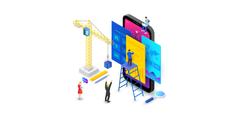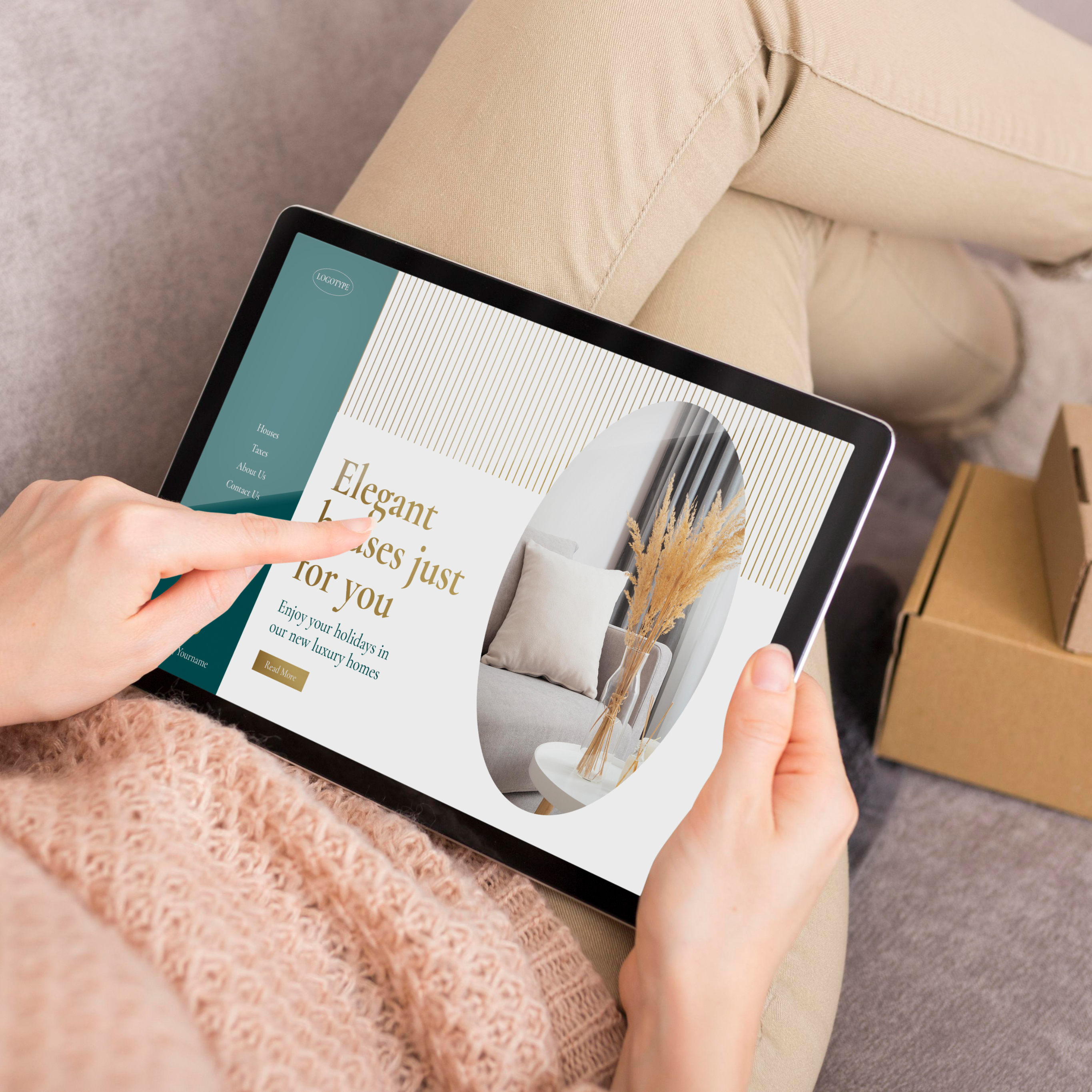From automated shopping experiences to improved user interfaces, consumer preferences in e-commerce are always changing. As you’re researching other storefronts and competitors, you might see online shops that look dramatically different than your own.
Through the use of branding and visual communication, the best e-commerce websites stand out from the crowd. Their investment in graphic design for their sites can even bring organizations higher purchasing prices, and retain customers for longer periods of time.
1. Motion Graphics for Products
There are many ways a brand may choose to showcase their product online. Unless you have a physical storefront, your website and product pages may be the first point of contact your customers have with your items.
In the past, simple photos or renders were enough to spark a buyer’s imagination and get them interested in the product. However, frequent misalignment between what was advertised online and what was shipped to customers has impacted the e-commerce industry over the years.
Motion graphics help solve this issue in the e-commerce industry by providing an elevated shopping experience. With motion graphics, companies can show products in a more fluid manner. Especially in clothing and athleisure industries, these benefits cannot be stressed enough.
Visual effects, like motion graphics, can help shoppers understand their purchases, and provide buyers with detailed information for increasings conversions and reducing returns.

2. New Layout Styles
Square grid layouts have been the most popular layout for e-commerce sites and while the rows and columns provide a structured layout of content, and, in most cases, an easier browsing experience, there is merit to switching things up for the sake of standing out in the noise.
Additionally, when you lay out products with differing sizes, you are able to bring the focus to items that you may want to feature. This allows you to feature best-selling products, without having to create explicit callouts for these items. By forsaking the grid layout, you can make your brand appear more modern. If you want to position yourself among a younger audience, or make strides in the fashion industry, this trend may make sense to explore. However, abandoning the grid layout is best for brands with a limited range of products. Customers not able to find the products they are looking for is every e-commerce expert’s worst nightmare!
3. Product Landing Pages
Previous e-commerce sites were operating under the assumption that many web users wanted a homepage, and then navigated to the products that they were searching for. Some users still appreciate a homepage, but design trends are pushing in favor of multiple product landing pages instead of a dedicated homepage.
As much of e-commerce sales are now largely driven by advertising and social media, many visitors actually never see the homepage. These new landing pages are stores in themselves, directing the customer to purchase the product that was featured in the landing page.
Essentially, these product pages function as smaller pages in specific categories of products. In your site design, link out to these categories so users can see similar or suggested products.
If done correctly, these landing pages should tell your potential customers all about not only the product being showcased, but also your company’s mission and vision.

4. Vertical Menu Design
Because e-commerce was originally built for desktops or laptops, horizontal menus have been the norm for e-commerce. However, 68% of users visit websites via their mobile devices! e-commerce platforms must be mobile-friendly.
Companies initially started creating responsive websites for different screen sizes. After years of data from users, it’s become evident that horizontal menus don’t work well on narrow mobile screens. Now, you may have noticed a growing number of ecommerce websites with vertically aligned menus.
Vertical menus can be added to either side of the page, and do not take up space. For many users, vertically aligned menus are intuitive. As this trend grows, we’re seeing major commerce sites use horizontal menus for primary navigation, and vertical menus for secondary navigation. It’s a great way to leave a lasting memory in your users, and maximize the precious space you have.
5. Green Commerce
While this concept isn’t directly related to graphic design, it’s worth mentioning. When fulfilling orders, you want to be more mindful of your packaging. Customers are 60% more willing to buy from a brand that supports “green practices”, such as producing packaging with recycled materials.
As you design your packaging, consider working with materials that reduce the impact they have on the environment. Some ideas are: bioplastics, reusable packaging, and non-toxic materials. You can even offer discounts for your customers if they bundle their products with other orders they may have placed, so there’s a reduction of packaging overall.
Green Commerce does, however, make an impact in the choices you make on your site. By providing complete product descriptions, detailed product photos, and even comment sections and reviews, you help your customers understand the product they are purchasing, and therefore prevent returns. Like fulfillment, returns can have a dramatic effect on the environment as well.
By integrating Green Commerce practices into your website, you can actually make more money by reducing returns, and get customers to appreciate your brand’s ethical standpoints.
6. Shop On Social
Social media platforms have made it much easier to shop online. Letting customers complete transactions without leaving social media is a sure-fire method for increasing sales. In fact, shoppable social media posts encourage followers to become shoppers, and shoppers to become followers.
Because of their visual nature, direct sales on Instagram and Facebook are great for online shopping. Social media channels have realized this, and are now offering new features for e-commerce stores.
Additionally, you can promote these posts on your e-commerce site. By including these posts on your site, you further encourage loyal shoppers to follow you on social media.

7. Take Tips from Fast Food
Since the dawn of food delivery services, fast food companies like McDonalds and Burger King have been leveraging graphic design that appeals to the senses to sell products online. Almost every sense is stimulated when ordering a product through these platforms, and it would make sense to take some tips from these services to boost your site’s user experience design.
Initially, you can add sound effects when customers make purchases or add items to cart. Animated hover effects, variegated color schemes, and high-quality photographs all instill a sense of wonder to your buyers.
However you choose to sensory amplify your product for your audience, make sure that it is on-brand. For example, if you were selling skincare, you may want to focus on the texture of the lotions and products that you sell. High-quality, close up images paired with elegant fonts and calming colors, all combine together to create a sensory experience that can engage a customer the same way that a brick-and-mortar store might.
8. Interactive Product Effects
Interactive technologies like VR and AR have skyrocketed in popularity over the past few years. With their rise in popularity, has also come their rise in accessibility for small- and medium-sized businesses. VR- and AR-enabled websites can help customers understand the products before those items show up at their door. Better shopping experiences lead to more customers, less returns, and loyal buyers.
Industries like fashion, furniture, and home decoration can benefit significantly from AR, VR, and 3D imaging. In the coming years, interactive vision will be the new norm for many companies. It’s best to implement it now, to make your customers believe that your company is forward-thinking and modern.
In e-commerce, strengthening your suite of technology is just as important as updating your graphic design.
While it can be difficult to determine which of these trends you should capitalize on, the easiest solution is to poll your audience of potential buyers, customers, and loyal shoppers to understand what they might want to see. By listening to these insights and leveraging actual data, you’ll get a feel for what trend, or set of trends, would best benefit your e-commerce store.




